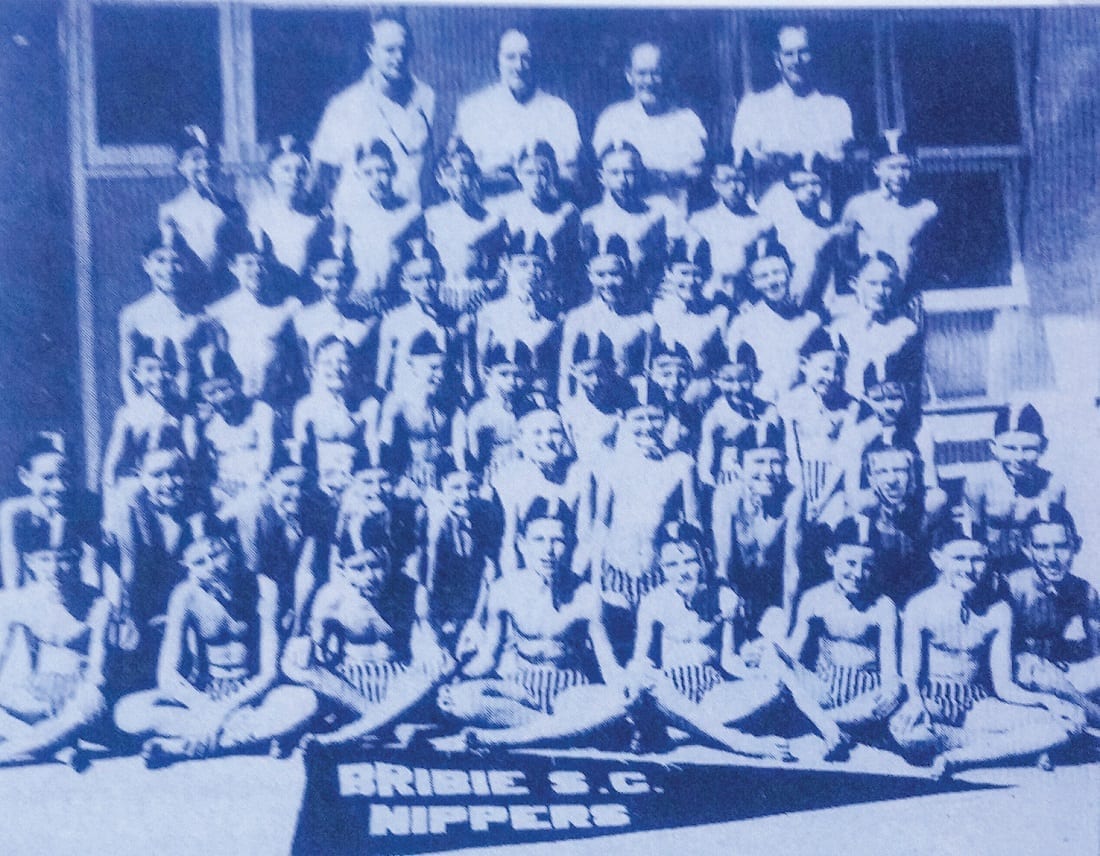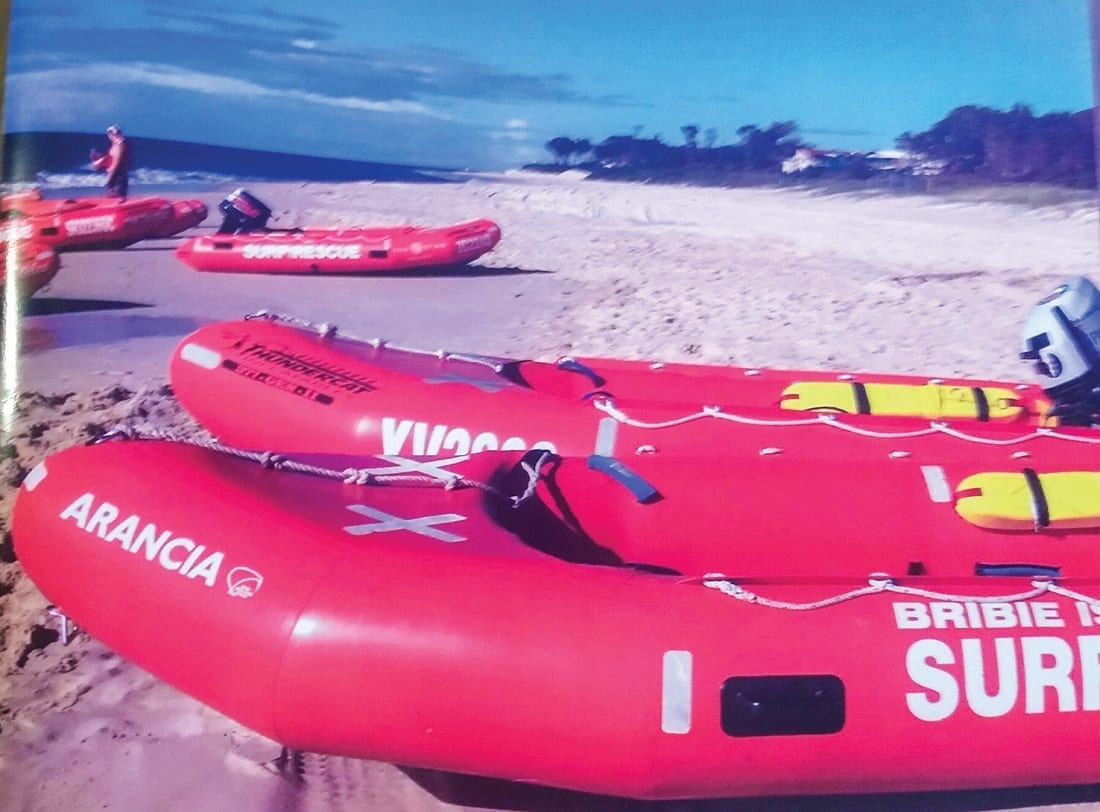Tags: History. Bribie Island. Brisbane. Queensland. Bribie Island Surf Lifesaving Clubhouse.
When Holly Sanders, Jess Harrison, Rachael McAndrew, Zane Butler and Rob Wyatt joined Tom Lingham, Steve Palmer, Lauren Watson, Oscar Lingham and Oliver Palmer as they returned to the Bribie Island Surf Lifesaving Clubhouse with Jeff Butler at the end of their patrol on May 7th, the sunset signalled the end of the 2017/2018 volunteer surf lifesaving season although further north, their counterparts will continue to patrol beached during the extended North Queensland season.
Featured Image(above): The Nippers were commenced on Bribie in 1966
As a coastal community, we must offer our sincere thanks to this dedicated group of men and women who give of their time throughout the swimming season to keep beachgoers safe. (In the 2016/2017 season alone, the Bribie Club amassed an incredible 8,996 patrol hours.) They not only sacrifice many hours each week but also have to maintain a high level of fitness and undergo constant training in order to cope with any situation that may occur during their patrol.
On Bribie Island, the Surf Lifesaving Club has continued to grow from when it was founded in 1923 after the secretary of the Brisbane Tug & Steamship Company contacted the secretary of the Royal Lifesaving Society to suggest the formation of a Lifesaving Club to patrol the Ocean Beach at Bribie Island during the Christmas holidays and it was brothers Harold and Bert Blake, both holders of a Royal Lifesaving certificate, who conducted the first patrols at Ocean Beach.
The first Club Hut was built in 1927. Obviously, nothing like the structure that was home to the club in those early days, the clubhouse that the Bribie Island Surf Lifesaving Club calls home now is a modern, well-equipped facility which is even able to accommodate visiting club members in the male and female bunk rooms.
I recently had the pleasure of being shown through the clubhouse by Club President Jeff Butler and Publicity Officer, Liz Palmer. On the lower level, the building features an office that is probably more spacious than that which I have seen at other clubs, a designated training room and a first aid room which is complete with several defibrillators, reference books and a range of other essential equipment. At the rear there is a boat and vehicle storage section and at the time I visited, IRB Captain Matt was busy preparing three IRB’s for the weekend’s events at the Gold Coast. ( The season might be over but the competitions still continue.)
Proceeding to the patrol room where the records are diligently kept, we took the stairs to the upper level and Jeff pointed out that, for those with a disability or an injury, a lift has been installed so everyone has access to the facilities upstairs. This level features a large common area with much of the club’s history adorning the walls and from this room, doors open to both the bunk rooms as well as the bathroom facilities.
Sliding doors at the front of the common area open onto a spacious deck with wonderful views of the ocean and Moreton Island. With reference to the history of the Bribie Island Surf Lifesaving Club, there are some very interesting names on the boards and these include Keith Urban’s brother Shane and Jeff pointed out that whilst he patrols with the Coolum Club now, both he and Keith have been members of the club.
One member who was President in 1997 and 1998 is Cliff Spong, the person who was responsible for introducing the IRB’s to Surf Lifesaving in Australia. Over the years, the Bribie Club has produced many champions, both in state and national competitions. A very important sector within any Surf Lifesaving Club is, of course, the Nippers, ( young ones aged under fourteen,) and from talking to both Liz and Jeff, I have been able to understand how lifesaving is an activity which fosters an interest by all members of a family.
Liz currently has two of her children as her oldest, Oliver, has now turned fourteen and accordingly moved on from Nippers. Jeff explained that his son also came through Nippers before joining the patrols. I was also given many other examples of complete family involvement by current club members and speaking of which, the club currently has a combined membership of about four hundred with patrolling members totalling 128.
After being afforded the chance to become more aware of just how much all members of the Surf Lifesaving fraternity enjoy the camaraderie and take pride in their activities, I can understand why the Nippers progress through and remain in the club and would advise any parents with children who enjoy the outdoors to consider talking to them about the Surf Lifesaving movement.





